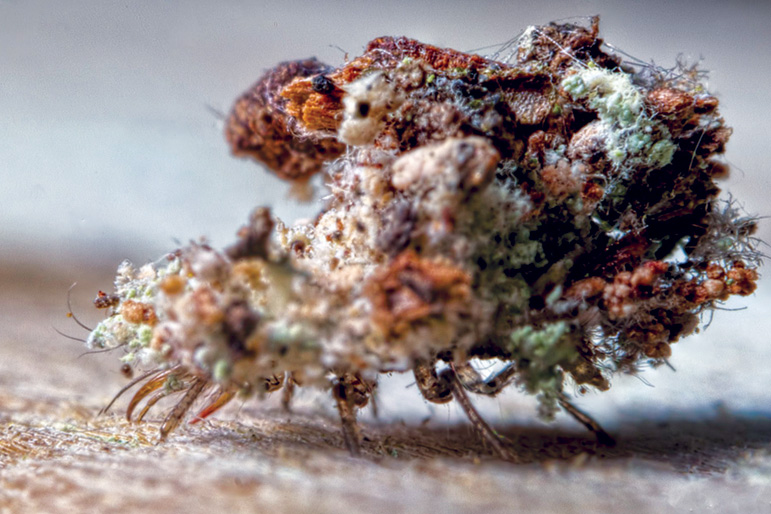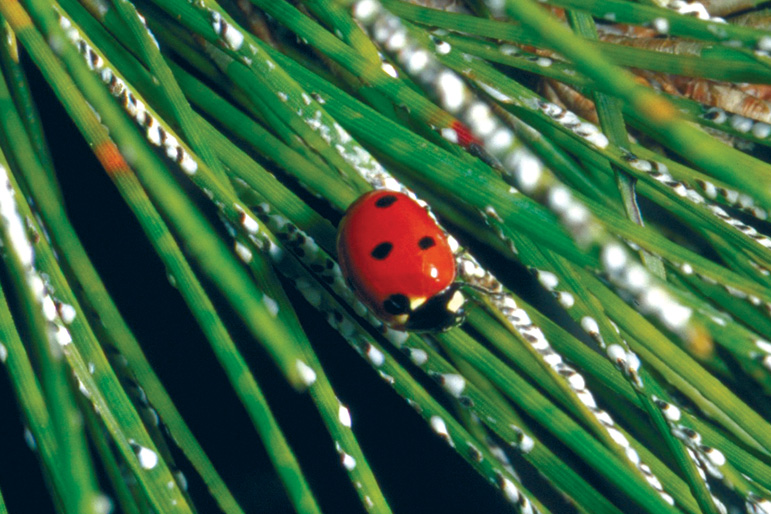

Beneficial Insects
Quietly, right under our noses, there are millions of insects, other arthropods (like spiders), and even microorganisms suppressing pest infestations without any input from us. We are familiar with some of these unsung heroes of the garden — insects such as ladybeetles and lacewings. But there are far more 'good guys' out there — some even too small to see with the naked eye — that play a crucial role in keeping pests at a manageable level.
Industry professionals need to be very careful with chemical pest control to minimize the negative effects on beneficial organisms. The old-fashioned 'cover spray' model to control pests wipes out beneficial populations and leads to pest flare-ups much worse than the initial problem. By targeting vulnerable life stages of pests and using specific materials that are easy on beneficials, we can maintain a delicate balance, getting rid of the bad guys and keeping the good guys around to help us.
Spotted LanternFly
In 2019 Spotted Lanternfly (SLF) made its presence known in the Delaware Valley. It seemed as if everyone was aware of and concerned about the new pest. Along with the media attention and hype came a lot of misinformation about SLFs.
The biggest misconception surround- ing the SLF concerns the amount of damage it can do to ornamental trees. Lanternflies will not do enough damage to a tree to injure it before the mess and nuisance of the pest will prompt a homeowner to act. Currently, SLFs are also relatively easy to control, so protecting the health of your trees could be as easy as one simple bark application in June. We expect more SLFs this year, but we are confident that protecting the health of your trees will be simple. Call us to set up an appointment as soon as you suspect that the SLF has made a return visit to your property.
Researchers are still learning about the basic life cycle and biology of the SLF. As we learn more about its preferred hosts and habits, we will be better able to control it in a variety of ways. Just remember that SLF is not a tree killer, it is more of a messy nuisance.

When heavy winds blow, major limbs — and sometimes entire trees — fall. The primary reason for this is poor structure, which results...

In the past 10 years, several significant pest and disease issues have become so common that we deal with them every day. Here...

Beech Leaf Disease (BLD) is emerging as the biggest threat to our trees since Emerald Ash Borer.
As we have communicated over the past...